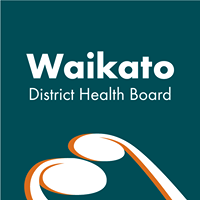Putting pieces together in Orthopaedics
When Chris O’Meeghan came to Waikato Hospital to work as an orthopaedics registrar in the early 1990s, he thought it would only be for a short stint.
Nearly 20 years later, O’Meeghan is now the new clinical unit leader of orthopaedics at the hospital and talks enthusiastically about the young department he heads.
Only one surgeon in
the department is over 50, and it’s not him.
It’s a
busy department and likely to get busier because the
survival rate for traumatic events is so much better thanks
to medical advances.
“We are busy here – you could say we are applied carpenters,” says O’Meeghan.
Orthopaedics is much like putting lego pieces together.
“There’s two extremes too. There’s a young trauma patient and the old arthritic patient.
“The appeal is of taking the older person’s pain away, they do work well, and they get a good bang for our buck.
“Then there’s the young trauma victim. We put the jigsaw back together again and get them back up again.
“We look after patients across the whole age spectrum. The child with a bone that isn’t straight, the young trauma patient to the older arthritic patient.”
O’Meeghan grew up in Christchurch - one of five children, three of whom became doctors, attended Christ’s College and graduated from Otago with a Bachelor of Medicine and Bachelor of Surgery.
“Becoming a surgeon is a choice I’ve never regretted and I would make the same choice again.”
Once qualified he had a couple of years in Nelson as a house surgeon, returned to Christchurch where he dabbled in neurosurgery, plastic surgery, accident and emergency, intensive care, orthopaedics and spinal injuries.
A year in Invercargill followed and from there to the Waikato.
In 1997, he became a fellow of the Royal Australasian College of Surgeons and then completed his fellowship training at hospitals in England and Canada.
His areas of specialisation are the upper limb, shoulder, elbow, hand and wrist including arthroplasty, hip and knee replacements and knee arthroscopy/anterior cruciate ligament reconstruction. He deals with many sport injuries and works closely with other sports physicians.
Orthopaedics is big business at Waikato. The department has 72 in-patient beds catering for a diverse range of elective cases including upper and lower limb joint replacements as well as trauma cases and complex pelvic reconstructions.
The beds are in three wards, one
of which is for paediatric patients.
The majority of
elective cases attend pre-admission clinics prior to
theatre. Twice a week there are structured
multi-disciplinary teaching sessions for patients undergoing
total joint replacement surgery. These have been very
successful in ensuring that discharge planning starts as
soon as possible.
The outpatient area sees approximately
1400 patients per month in fracture clinics and consultant
clinics and the plaster room, while there are more than 300
inpatient admissions per month.
There is a high trauma
caseload with dedicated theatre lists. It is the busiest
acute hospital in the country.
“People survive more accidents these days but with extensive chest, abdominal, and head injuries for example.”
The relationship between the patient and medical staff can often be a long one and for the most part very rewarding.
The orthopaedic doctors are part of a multidisciplinary team including nurses, theatre staff, receptionists, plaster technicians, therapists, typists and many others.
“It is vital we
all work together for the benefit of the patient,” he
said.
“The orthopaedic department is generally a pretty
happy one which is a reflection of the great staff we work
with.”
His goal is to see Waikato established with a regional hand unit like those in Middlemore and Christchurch.
“There’s a definite need for that here,” he says.
“Longer term we would like to see the establishment of a “bone shop” model where the orthopaedic department deals with the more minor fractures, dislocations etc which we tend not to see as much as we used to.”
The formation of a regional hand unit would do wonders for the treatment of hand injuries in the Waikato, he says.
O’Meeghan says he’s where he wants to be and is proud to lead one of the country’s busiest orthopaedic teams.
Orthopaedics: (www.waikatodhb.govt.nz/orthopaedics
)
• Clinical unit director
• nine
consultant orthopaedic surgeons
• 12 registrar
positions, including four trainee registrars
• Six
house officers
Four clinical nurse managers (includes
outpatients).
ENDS



 School Library Association of NZ Aotearoa: Students Missing Out - New Research Exposes Alarming Disparities Across Aotearoa
School Library Association of NZ Aotearoa: Students Missing Out - New Research Exposes Alarming Disparities Across Aotearoa ANZCA: Health Reforms Raise Fears Of Two-Tier System And Workforce Shortages
ANZCA: Health Reforms Raise Fears Of Two-Tier System And Workforce Shortages Māpura Studios: A Matariki Exhibition At Historic Alberton House
Māpura Studios: A Matariki Exhibition At Historic Alberton House Doc Edge Festival: Finalists For The Doc Edge Awards 2025, an Oscar®-qualifying event
Doc Edge Festival: Finalists For The Doc Edge Awards 2025, an Oscar®-qualifying event Yachting New Zealand: 'A Win For The Squad' - Young 49er Team Strikes Gold At European Champs
Yachting New Zealand: 'A Win For The Squad' - Young 49er Team Strikes Gold At European Champs Michael King Writers Centre: Shilo Kino Awarded 2025 Shanghai Writing Residency
Michael King Writers Centre: Shilo Kino Awarded 2025 Shanghai Writing Residency